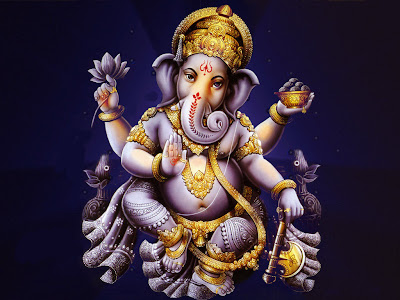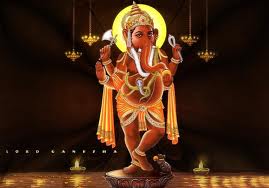Tag: kambi kadakal, kambi katha new, kambikathakal malayalam, kerala erotic stories, malayalam aunty kadakal, malayalam kambi, ente minikutti, kathakal, new malayalam kambikadakal, thundu katha,
Masala Stories, Sex Stories, Kambi Kathakal, Kambi Stories, Kampi Kathakal, Aunty Stories, Romance Kathakal, Mallu Stories, Indian Masala Stories
Saturday, November 3, 2012
Friday, October 12, 2012
Valancheri Muthumol Phone Talk - Masala Katha
Click here to hear the Masala Talk Valancheri Muthumol
Tag: Malayalam Kambikathakal Kochupusthakam Stories Mallu Masala Stories Read Malayalam Kambikathakal, Kochupusthakam Kathakal, Mallu stories, Sex Stories, Sex Talk, Romance Stories, Romance Talk,
Wednesday, October 10, 2012
God Vinayaka Maha Ganesh Vigneswara Maha Ganapathy Photos
Ganesha, गणेश,Gaṇeśa, also spelled Ganesa or Ganesh, also known as Ganapati (Sanskrit: गणपति, IAST: gaṇapati), Vinayaka (Sanskrit: विनायक; IAST: Vināyaka), and Pillaiyar (Tamil: பிள்ளையார்), is one of the deities best-known and most widely worshipped in the Hindu pantheon. His image is found throughout India and Nepal. Hindu sects worship him regardless of affiliations. Devotion to Ganesha is widely diffused and extends to Jains, Buddhists, and beyond India.
Although Ganesa is known by many other attributes, Ganesha's elephant head makes him particularly easy to identify. Ganesha is widely revered as the Remover of Obstacles and more generally as Lord of Beginnings and Lord of Obstacles (Vighnesha (Sanskrit: विघ्नेश; IAST: Vighneśa), Vighneshvara (Sanskrit: विघ्नेश्वर; IAST: Vighneśvara)), patron of arts and sciences, and the deva of intellect and wisdom. He is honoured at the beginning of rituals and ceremonies and invoked as Patron of Letters during writing sessions. Several texts relate mythological anecdotes associated with his birth and exploits and explain his distinct iconography.
Ganesha emerged a distinct deity in clearly recognizable form in the 4th and 5th centuries CE, during the Gupta Period, although he inherited traits from Vedic and pre-Vedic precursors. His popularity rose quickly, and he was formally included among the five primary deities of Smartism (a Hindu denomination) in the 9th century. A sect of devotees called the Ganapatya (Sanskrit: गाणपत्य; IAST: gāṇapatya), who identified Ganesha as the supreme deity, arose during this period. The principal scriptures dedicated to Ganesha are the Ganesha Purana, the Mudgala Purana, and the Ganapati Atharvashirsa.
Ganesha is identified with the Hindu mantra Aum (Tamil:ஓம், Sanskrit:ॐ) also called Om). The term oṃkārasvarūpa (Aum is his form), when identified with Ganesha, refers to the notion that he personifies the primal sound. The Ganapati Atharvashirsa attests to this association. Chinmayananda translates the relevant passage as follows:
O Lord Ganapati!) You are (the Trinity) Brahma, Vishnu, and Mahesa. You are Indra. You are fire [Agni] and air [Vāyu]. You are the sun [Sūrya] and the moon [Chandrama]. You are Brahman. You are (the three worlds) Bhuloka [earth], Antariksha-loka [space], and Swargaloka [heaven]. You are Om. (That is to say, You are all this).
Ganesha is worshipped on many religious and secular occasions; especially at the beginning of ventures such as buying a vehicle or starting a business. K.N. Somayaji says, "there can hardly be a [Hindu] home [in India] which does not house an idol of Ganapati. Ganapati, being the most popular deity in India, is worshipped by almost all castes and in all parts of the country". Devotees believe that if Ganesha is propitiated, he grants success, prosperity and protection against adversity.
Ganesha is a non-sectarian deity, and Hindus of all denominations invoke him at the beginning of prayers, important undertakings, and religious ceremonies. Dancers and musicians, particularly in southern India, begin performances of arts such as the Bharatnatyam dance with a prayer to Ganesha. Mantras such as Om Shri Gaṇeshāya Namah (Om, salutation to the Illustrious Ganesha) are often used. One of the most famous mantras associated with Ganesha is Om Gaṃ Ganapataye Namah (Om, Gaṃ, Salutation to the Lord of Hosts).
Devotees offer Ganesha sweets such as modaka and small sweet balls (laddus). He is often shown carrying a bowl of sweets, called a modakapātra. Because of his identification with the color red, he is often worshipped with red sandalwood paste (raktacandana) or red flowers. Dūrvā grass (Cynodon dactylon) and other materials are also used in his worship.
Festivals associated with Ganesh are Ganesh Chaturthi or Vināyaka chaturthī in the śuklapakṣa (the fourth day of the waxing moon) in the month of bhādrapada (August/September) and the Gaṇeśa jayanti (Gaṇeśa's birthday) celebrated on the cathurthī of the śuklapakṣa (fourth day of the waxing moon) in the month of māgha (January/February)."
An annual festival honours Ganesha for ten days, starting on Ganesh Chaturthi, which typically falls in late August or early September. The festival begins with people bringing in clay idols of Ganesha, symbolising Ganesha's visit. The festival culminates on the day of Ananta Chaturdashi, when idols (murtis) of Ganesha are immersed in the most convenient body of water, while the people shout "Ganapati Bappa Morya" (Ganesh come back soon next year). Some families have a tradition of immersion on the 3rd, 5th, or 7th day. In 1893, Lokmanya Tilak transformed this annual Ganesha festival from private family celebrations into a grand public event. He did so "to bridge the gap between the Brahmins and the non-Brahmins and find an appropriate context in which to build a new grassroots unity between them" in his nationalistic strivings against the British in Maharashtra. Because of Ganesha's wide appeal as "the god for Everyman", Tilak chose him as a rallying point for Indian protest against British rule. Tilak was the first to install large public images of Ganesha in pavilions, and he established the practice of submerging all the public images on the tenth day. Today, Hindus across India celebrate the Ganapati festival with great fervour, though it is most popular in the state of Maharashtra. The festival also assumes huge proportions in Mumbai, Pune, and in the surrounding belt of Ashtavinayaka temples.
Halebid Ganesha..truncated by Ghazni Mohd!

Madurai Vinayakar

Ujjain Vinayakar

Maheshwar
Ganesh Wallpaper
Chaturbhuj Lord Ganesha
Once Ganesha was accepted as one of the five principal deities of Brahmanism, some Brahmins (brāhmaṇas) chose to worship Ganesha as their principal deity. They developed the Ganapatya tradition, as seen in the Ganesha Purana and the Mudgala Purana.
The date of composition for the Ganesha Purana and the Mudgala Purana and their dating relative to one another has sparked academic debate. Both works were developed over time and contain age-layered strata. Anita Thapan reviews comments about dating and provides her own judgement. "It seems likely that the core of the Ganesha Purana appeared around the twelfth and thirteenth centuries", she says, "but was later interpolated." Lawrence W. Preston considers the most reasonable date for the Ganesha Purana to be between 1100 and 1400, which coincides with the apparent age of the sacred sites mentioned by the text.
R.C. Hazra suggests that the Mudgala Purana is older than the Ganesha Purana, which he dates between 1100 and 1400. However, Phyllis Granoff finds problems with this relative dating and concludes that the Mudgala Purana was the last of the philosophical texts concerned with Ganesha. She bases her reasoning on the fact that, among other internal evidence, the Mudgala Purana specifically mentions the Ganesha Purana as one of the four Puranas (the Brahma, the Brahmanda, the Ganesha, and the Mudgala Puranas) which deal at length with Ganesha. While the kernel of the text must be old, it was interpolated until the 17th and 18th centuries as the worship of Ganapati became more important in certain regions. Another highly regarded scripture, the Ganapati Atharvashirsa, was probably composed during the 16th or 17th centuries.
Labels:
ganapathi,
ganesh,
god ganesh,
lord vigneswara,
vinayaka,
गणपति,
गणेश,
विघ्नेश,
विघ्नेश्वर,
विनायक,
பிள்ளையார்
Subscribe to:
Posts (Atom)
Popular Posts
-
I am a 34 years old housewife and have been married for the last 10 years, mother of a 9 year old. My husband has been deputed for 2 yea...
-
എന്റെ മിനികുട്ടി Tag: kambi kadakal, kambi katha new, kambikathakal malayalam, kerala erotic stories, malayalam aunty kadaka...
-
Click the below link to read the story Anuragikalaya Ammammar Malayalam Kambi Katha
-
Tag: Vindu, Bindu Aunti, Vindu Aunti, Malayalam Kambikathakal, New Malayalam Kambi Kathakal, Kambi Kathakal, Kathakal, Masala, s...
-
Click the below link to read the story Thiruvathirakali Malayalam Kambi Katha
-
Babychayanum Madalasakalum Babychayanum Madalasakalum ബേബിചായനും മദാലസകളും Malayalam Kambi Kathakal
-
Click here to hear the Masala Talk Valancheri Muthumol Tag: Malayalam Kambikathakal Kochupusthakam Stories Mallu Masala Stories Rea...
-
ആ നിമിഷം മലയാളം കമ്പി കഥ Aa Nimisham Malayalam Kambi Katha Click the below link to read the story ആ നിമിഷം Aa Nimisham
-
As Ramadan's last days have arrived, Muslims across the globe gear up preparation for the biggest event of Eid al Fitr. The U.S. Post Of...






















































